Julia Mamaea
Julia Mamaea (after 180-235): empress of the Roman empire, mother of the emperor Severus Alexander (r. 222-235).
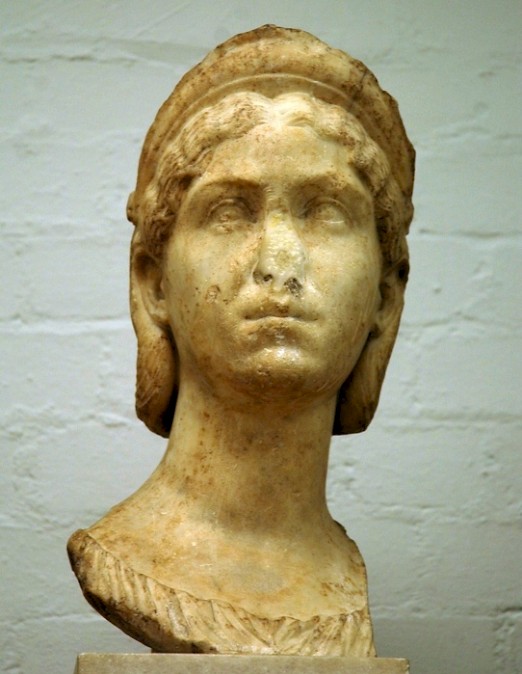
Julia Mamaea was born on the 14th or 29th of August of an unknown year after 180. She was the second daughter of Gaius Julius Avitus Alexianus and Julia Maesa and a younger sister of Julia Soaemias. Mamaea's first marriage may have been to a former consul, and after his death, she was allowed to retain the senatorial rank, even when she later -during the reign of her uncle Septimius Severus (emperor 193-211) married to an equestrian named Gessius Marcianus. Like Mamaea, he was from Syria (born in Arca), and the marriage may have served to strengthen Severus' power base in the eastern provinces. Mamaea bore him a son named Alexianus, who was probably born on 1 October 208.
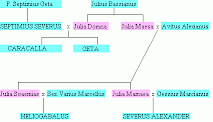
In 217, Caracalla, who had succeeded Severus, was assassinated; the new emperor was Caracalla's praetorian prefect, Macrinus. Like her mother Julia Maesa and her sister Julia Soaemias, Mamaea was in Syria. She may have played a role during the revolt that was organized by Julia Maesa and resulted in the death of Macrinus and the accession of Soaemias' son Varius Avitus Bassianus, who had already earned some fame as priest of the god Elagabal of Emesa and is, as emperor, usually called Heliogabalus.
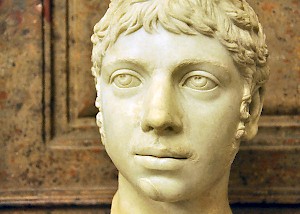
His reign lasted from 218 to the spring of 222, and was a dramatic failure. At first, the boy-emperor acted with moderation, but after the end of 220, he wanted to introduce the cult of his god, and a reign of terror started that lasted for about a year and a half. In the summer of 221, however, a period of moderation started, when the three ladies of Emesa were able to convince Heliogabalus that he should adopt Mamaea's son Alexianus and make him caesar. To celebrate this, the young caesar changed his name into Severus Alexander - which connected him with Caracalla, who was famous for his admiration of Alexander the Great and was popular among the soldiers.
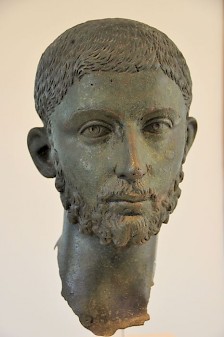
The moderation was not to last. In December 221, it had become apparent that the soldiers loved Severus Alexander and his mother Mamaea and hated Heliogabalus and Soaemias. Grandmother Julia Maesa sided with the youngest of her two grandsons. Still, Heliogabalus was a factor to be reckoned with, and Mamaea made sure that Severus Alexander was permanently guarded. The two young men were both consul in 222, but the emperor had already tried to kill his caesar, and the crisis was deepening. On 11 or 12 March, Heliogabalus and his mother were lynched by the soldiers, and Severus Alexander was proclaimed emperor on the thirteenth.
He was still young, and Julia Maesa and Mamaea were firmly in charge. One thing they had learned: if the dynasty was to continue, there was no room for religious experiments. The baetyl of Elagabal, his main cult object, was sent back to Emesa, and Severus Alexander did everything as a Roman emperor was supposed to do. A team of sixteen senators and the praetorian prefect Ulpian, a very famous jurist, offered him advise and made sure that he received a decent, Roman education. This policy had some success: writing a century-and-a-half later, the author of the Historia Augusta was impressed by the contrast between Heliogabalus and Severus Alexander, and he portrayed the two as an oriental devil and a Roman saint.
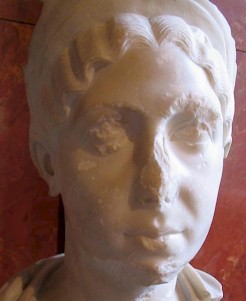
Perhaps the only thing that was not completely according to custom was the prominent role of Julia Mamaea. After the death of her mother Julia Maesa, she exercised real influence, and received the title consors imperii, "partner in rule", which in fact made her the first officially recognized empress of the Roman empire. Marcus Aurelius had offered the same position to Lucius Verus; but no emperor had offered this to a woman. On the other hand, the Romans were not completely unaccustomed to it, because they had appreciated Julia Domna, the remarkably "visible" wife of Severus and mother of Caracalla. Like her aunt, Mamaea received titles like Mater Castrorum ("mother of the camps"; 224) and Mater Senatus ("mother of the Senate; 226).
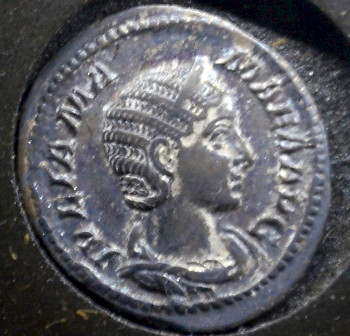
Meanwhile, the east was in great turmoil. In the Parthian Empire, a revolt took place, and in 224, the Persian rebel Pâpak dethroned king Artabanus IV. Two years later, Pâpak's son and successor Ardašir took Ctesiphon, the capital of the Parthian empire. This meant the end of Parthia and the beginning of the Sasanian empire. Ardašir wanted to be called "king of kings", the title that had been used by the Parthian kings and - centuries ago - by the Achaemenid rulers of Persia. A war between Rome and the renewed Persian empire was inevitable, and in 231, Severus Alexander proceeded to the east. When negotiations failed, the Romans invaded Iraq, where Ardašir was forced to retreat and the status quo was restored in 232.
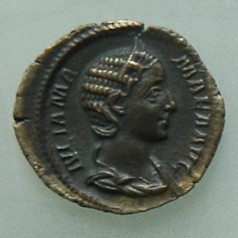
In 232/233, the emperor and Julia Mamaea were in Antioch, and next year, the emperor could celebrate his Persian triumph in Rome. Meanwhile, however, the Germanic tribe of the Alamanni, which had once been defeated by Caracalla, had become restless and had destoyed the limes in the Black Forest. Again, Severus Alexander and Julia Mamaea proceeded to the front, and again, they sought a diplomatic solution first - which meant buying off the tribal warriors.
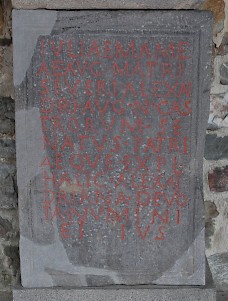
The legionaries in Mainz, who belonged to the Twenty-second Legion Primigenia, and the Italian legion that had accompagnied them, II Parthica, understood what this meant: an incentive to the Germanic tribe to continue their aggression, and no additional pay for themselves, because there was no fight. On 21 March 235, they lynched their emperor and his mother. The new emperor was Maximinus, who brought the war to a more satisfying end. The Senate pronounced a damnatio memoriae over Mamaea.
Julia Mamaea is known to have had personal contacts with Christian leaders like Origen.